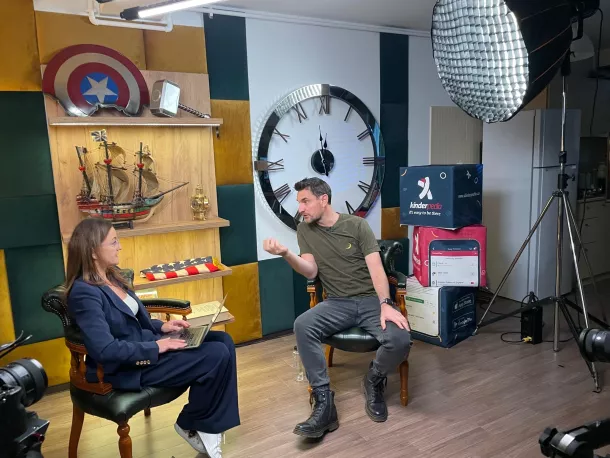
Leadership for education: how schools change from directive to democratic leadership styles
Leadership for education is a contemporary subject. Kinderpedia is now releasing a whitepaper on this topic, bringing together several theories, perspectives and recommendations.
"The success of an effective educational team is determined by the impact a leader has on educational stakeholders." says Helen O'Donoghue, educational specialist, and leadership coach, during the "Leadership for Education" conference organized by Kinderpedia. The event aimed to bring into focus new research and trends in the field of leadership, and meaningful discussions between specialists and reputable leaders from Romania and the UK.
During the event, Kinderpedia published a whitepaper with a focus on leadership for education. The paper combines theoretical elements with specialists' perspectives on leadership, models for its effective application in organizations, strategies for identifying leadership qualities, practical elements with which the Kinderpedia platform can support management in schools.
"We do this because we understand how important it is to empower teachers, to make their work visible, to help them communicate their vision to the whole school community" - says Evelina Necula, co-founder of Kinderpedia.
Stages in building democratic leadership for education
At the event, Helen O'Donoghue spoke about the importance of building a shared vision in a school, a shared vision between the management team, teachers, and other members of the community in order to achieve the goals.
Helen O'Donoghue is an international educational consultant, providing training to over 300 school leaders in 30 countries around the world. The inspiring speech highlighted the importance of leadership, learning, and how we can make the world a better place through education. All this, starts from Simon Sinek's theoretical foundation, namely The Golden Circle which underpins quality leadership, through questions such as:
- Why do you do what you do?
- How do you do what you do?
- How can your actions help improve the process?
- What do you do in the end?
Here are more details about this model.
Leaders focus on inspiration, managers are focused on administration
Also, to clarify the context, Helen makes a distinction between the concepts of leadership for education and management, pointing out that managers are work-focused, administration-focused, have subordinates and want to get things done without risking too much. Leaders, on the other hand, build a vision of what they see as possible and inspire and involve people in making that vision a reality. Leaders focus on setting, measuring and achieving goals and remain curious and informed in a changing world of work.
Leadership styles in Daniel Goleman's vision
We can speak of the existence of six leadership styles based on the categories defined by Daniel Goleman: visionary (with focus on standard setting and performance monitoring, directive), directive (the leader has a high level of control over the team), democratic (assumes a belief that employees can move in the right direction), coaching (based on collaboration and support), affiliative (attention to the needs of employees), pacesetting (the leader decides the rhythm of work). Some we need in the short term, others in the long term, some can serve us punctually, others we can deepen. Each of us has a style that we feel comfortable with, that represents us as leaders, but at the same time, we can practice other styles that may be useful to us at some point.
"The main element that connects an effective team is trust"
Leadership for education is about teamwork, vision and common purpose. An effective team is willing to take risks, to actively engage in the process, to communicate continuously, especially when difficulties and challenges arise, to find and follow the most appropriate strategies, in order to achieve the goals. The most effective way to build a team is through the coaching process. In this way, a good leader is concerned with the long-term development of team members, helps them identify their strengths and weaknesses, encourages them to create long-term goals and provides ongoing feedback and advice. For a team to embrace development through coaching methods, it is essential that all members trust their leader and understand the principles of how the process works.
Educational leadership is a hot topic and as a natural consequence of the growing interest in leadership psychology in recent years, different leadership theories have been proposed to clarify why and how certain people become great leaders.
Download the Kinderpedia whitepaper on leadership in education, available in both English and Romanian, and find out how we can apply these theories in education to bring about positive change.
Find what you're looking for

Kinderpedia
The complete communication and management solution for schools and childcare centres.
Simplifies teachers' work and brings parents closer to their children's school progress.
Recommended articles
Want to improve your center quality? Kinderpedia is here to help! Not only do we provide thousands of informational content pieces like blog posts, podcasts, webinars and more, we are also makers of the #1 Rated and Reviewed Childcare Software.







